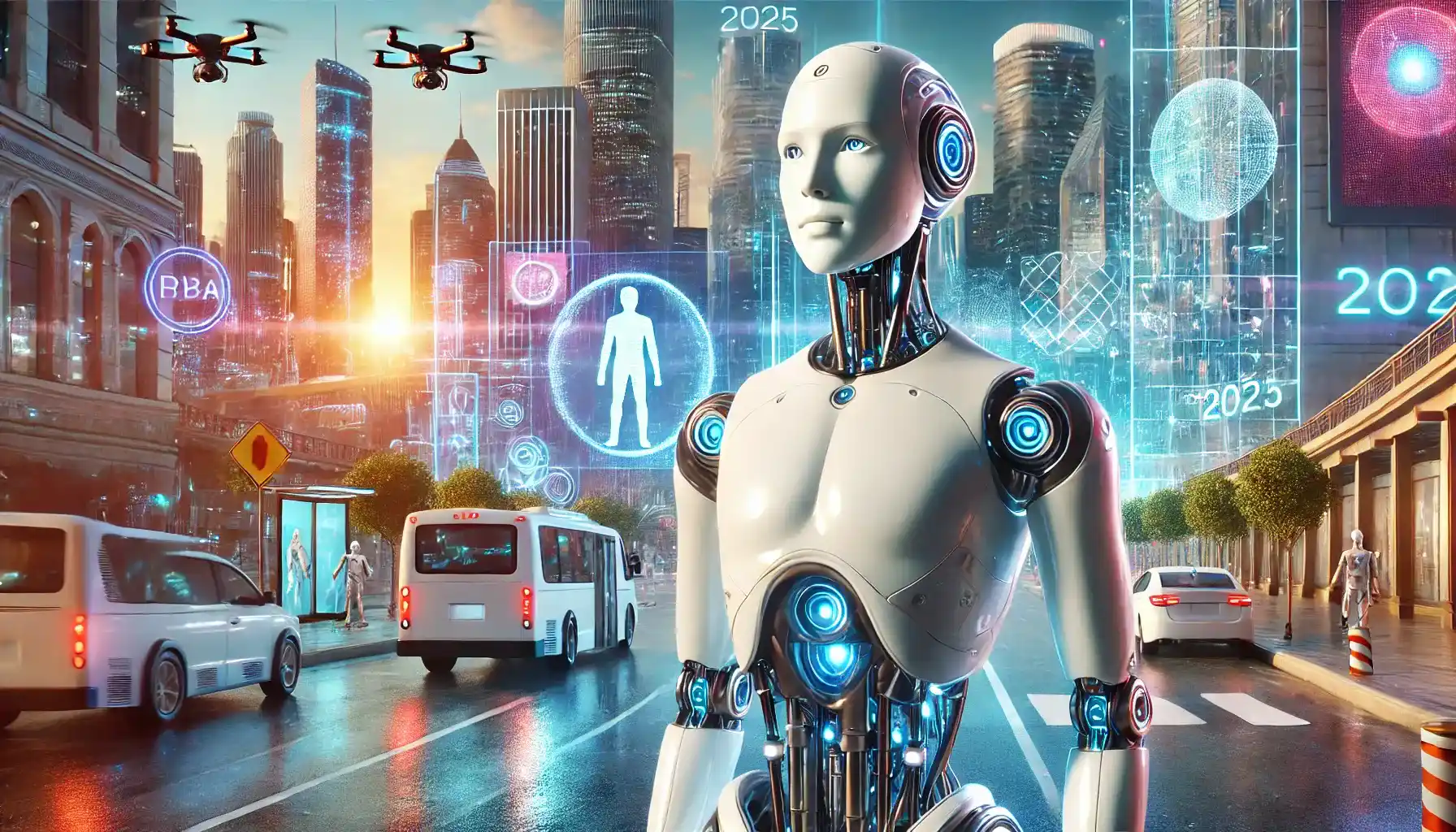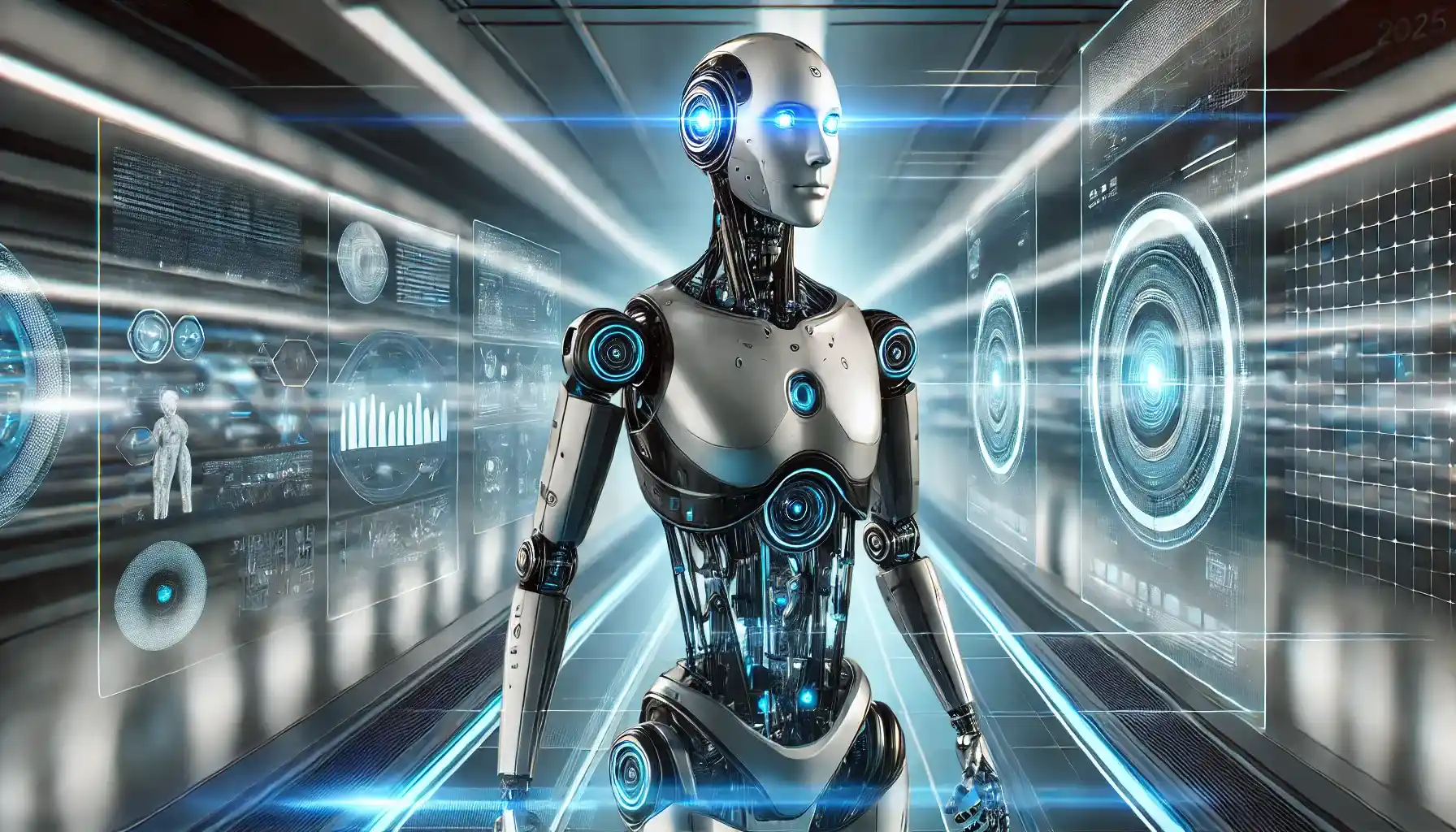Table of Contents
As we step into a new era of technology, humanoid robots are emerging at the forefront of innovation, poised to transform industries and enhance daily human experiences. The year 2025 promises groundbreaking advancements, particularly with NVIDIA’s upcoming launch of compact computing solutions specifically designed for these sophisticated machines.
This article explores NVIDIA’s vision for humanoid robots 2025 and the game-changing potential of their cutting-edge technology.
NVIDIA’s Vision for Humanoid Robots 2025
NVIDIA is a powerhouse in the tech industry, renowned for its innovations in graphics processing and artificial intelligence. As the company looks ahead to 2025 , its mission is clear: to transform humanoid robots through advanced computing technologies.
By harnessing the power of AI and machine learning, NVIDIA aims to create robots that can operate autonomously, engage with humans more effectively, and enhance our daily lives.
Role of Compact Computers in Humanoid Robots 2025
Compact computers are at the heart of NVIDIA’s strategy for humanoid robots 2025. These cutting-edge devices will enable robots to process vast amounts of data in real-time, allowing for rapid responses to their surroundings.
By integrating powerful computing capabilities into a smaller form factor, humanoid robots will become more agile and capable, paving the way for a new era of robotic applications.

Key Features of NVIDIA’s Compact Computers for Humanoid Robots 2025
NVIDIA’s compact computers are designed with several transformative features that will enhance the performance of humanoid robots 2025 :
- Superior Performance: Equipped with advanced GPUs, these computers will deliver unparalleled processing power, enabling complex tasks such as speech recognition and natural language processing.
- Energy Efficiency: The compact designs will focus on reducing power consumption, allowing humanoid robots to operate longer on a single charge without compromising performance.
- Enhanced AI Capabilities: Leveraging NVIDIA’s expertise in AI, these computers will support sophisticated algorithms that enable humanoid robots to learn from their environment and adapt their behaviors over time.
Use Cases for Humanoid Robots 2025
As technology progresses and humanoid robots 2025 become more sophisticated, their potential applications across various industries will expand dramatically. By 2025 , we can expect to see a variety of compelling use cases that leverage the unique capabilities of these robots:
Healthcare
In the healthcare sector, humanoid robots hold the promise of significantly enhancing patient care. They can assist medical professionals with routine tasks, such as monitoring vital signs and providing medication reminders to patients.
- Moreover, their ability to interact with individuals on a personal level makes them excellent companions for the elderly, alleviating feelings of loneliness and providing social engagement.
- In surgical settings, humanoid robots can support surgeons by delivering tools, assisting with precise movements, and even performing certain tasks under human oversight. These advancements can lead to improved patient outcomes and increased efficiency within healthcare facilities.
Hospitality
The hospitality industry stands to benefit immensely from the introduction of humanoid robots.
- In hotels and restaurants, these robots can serve as personable concierges, offering information about local attractions, managing reservations, and even processing check-ins and check-outs with efficiency and charm.
- Their ability to engage guests adds a unique touch to the customer experience, making it more memorable and enjoyable. Imagine entering a hotel lobby greeted by a friendly humanoid robot that can assist with your needs while providing recommendations tailored to your preferences.
Education
In the field of education, humanoid robots can act as interactive tutors, providing personalized assistance to students. These robots are capable of adapting their teaching methods based on individual learning styles, thereby enhancing educational outcomes.
- For instance, a humanoid robot could engage students in interactive lessons, quizzes, and activities, making learning more engaging and effective compared to traditional methods.
- They can also help in language learning by providing conversational practice, offering instant feedback, and creating a more immersive learning environment.
Challenges and Considerations for Humanoid Robots 2025
While the future of humanoid robots in 2025 is exciting, several challenges warrant careful consideration to ensure their successful integration into society:
Technical Challenges
- One of the primary hurdles in deploying humanoid robots is the integration of advanced artificial intelligence.
- Ensuring that these robots can interact seamlessly with humans requires complex programming and the ability to process and respond to a wide range of emotional and contextual cues.
- Achieving naturalistic human-robot interaction is crucial, as it can significantly impact user acceptance and the effectiveness of the robots in real-world applications.
- Furthermore, challenges in mobility, navigation, and the robots’ ability to operate in dynamic environments must also be addressed to make them practical for daily use.
Ethical Considerations
- The rise of humanoid robots poses important ethical questions, particularly in relation to privacy and autonomy.
- As these robots become more prevalent in homes, schools, and public spaces, concerns around data collection, surveillance, and the boundaries of human-robot interaction will need to be thoughtfully explored.
- Issues such as the implications of emotional attachment to robots and their role in care-giving also raise questions about the nature of human relationships with technology. Society must engage in discussions about the ethical frameworks guiding robot development and deployment to ensure that these technologies serve the public good.

Future Trends Influencing Humanoid Robots 2025 and Beyond
- Innovative Technology
- Breakthroughs in materials science leading to lighter and more durable designs.
- Improvements in sensory technology, including enhanced cameras and haptic feedback.
- Increased Integration of AI
- Advanced machine learning algorithms allowing robots to learn and adapt to user preferences.
- More naturalistic human-robot interactions through improved understanding of emotional and contextual cues.
- Expanded Applications
- Broader use of humanoid robots in various sectors, including healthcare, education, hospitality, and customer service.
- Development of specialized robots for niche roles and specific tasks.
- Enhanced Collaborative Capabilities
- Ability to work alongside human workers in various environments, from factories to offices.
- Increased focus on teamwork between humans and robots to maximize productivity.
- User-Centric Design
- Greater emphasis on designing robots with user-friendly interfaces and personalized interactions.
- Development of humanoid robots that can cater to individual needs and preferences.
- Regulatory and Ethical Frameworks
- Emergence of guidelines and regulations governing the development and deployment of humanoid robots.
- Ongoing discussions about the ethical implications of human-robot relationships and safety considerations.
- Sustainability Initiatives
- Focus on creating energy-efficient robots with environmentally friendly materials.
- Development of robots that can assist in sustainability efforts, such as environmental monitoring and conservation.
Conclusion
the advancements anticipated for humanoid robots 2025 will profoundly transform our interactions with technology across various sectors. With NVIDIA’s innovative compact computers enhancing capabilities, these robots are set to operate autonomously and improve services in healthcare, hospitality, and education.
However, addressing the technical and ethical challenges is crucial to ensure their successful integration into society. By fostering discussions on privacy and human-robot relationships, we can pave the way for a future where humanoid robots 2025 are not only valuable tools but also trusted partners in our everyday lives.